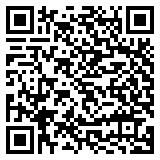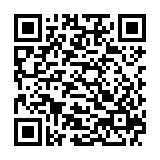From casual WhatsApps to corporate Slack channels, emojis are now a universal visual shorthand. They transcend languages—sort of. But here’s the million-dollar question: can you actually translate an emoji? Interpreters are increasingly dealing with situations where a well-placed 😏 or a 🙄 carries more meaning than a paragraph of text. And that’s where things get tricky. Here’s the scoop on emojis and interpreting!
The Rise of Emojis in Everyday Language
Over 10 billion emojis are sent every day. That’s a whole lot of 🎉 and 😂. In fact, many Gen Z texters and millennial professionals rely on emojis to soften tone, convey sarcasm, or add emotion that plain text often lacks.
But the meaning of an emoji isn’t always straightforward.
A Global Miscommunication Playground
Let’s say someone from the UK sends a 😬 to acknowledge an awkward situation. A receiver from another culture might interpret it as embarrassment, passive aggression, or even just bad news. That’s not just a misunderstanding—it can lead to miscommunication in negotiations, legal contexts, or even international diplomacy.
Emoji vs. Interpretation: What’s the Real Meaning?
A classic example is the 🙏 emoji. In Japan, it’s often used to say “please” or “thank you,” representing bowing. In Western countries, people commonly use it to mean “prayer.” The same image, completely different vibes.
Interpreters need to quickly assess:
- The sender’s cultural background
- The platform context (formal vs. casual)
- The tone of the conversation
- Possible connotations, both intended and unintended
The Real-Life Stakes of Emoji Misinterpretation
Imagine you’re interpreting a cross-border business chat. One party ends a message with 😅 after discussing a tight deadline. Do they mean “Oops, I forgot,” or “That’s a close call!” or just “We’re cutting it close but all good”?
Getting that wrong can shift the emotional tone of an entire conversation.
How Interpreters Handle Emoji Chaos
Professional interpreters, especially in digital and legal settings, are now trained to interpret emojis with the same care as idioms or slang. Here’s how they manage:
- Contextual analysis: Reading the conversation flow to decode emoji intent.
- Cultural adaptation: Replacing emojis with culturally appropriate equivalents.
- Verbalising visuals: When needed, interpreters might say, “They added a nervous smile emoji,” to retain tone.
Emoji Translation Isn’t New (But It’s Getting Trickier)
Some platforms, like Slack and Discord, even allow for custom emojis—like inside jokes within teams or countries. For interpreters, this means emoji interpretation is evolving rapidly, requiring constant cultural awareness and digital literacy.
The Unsung Experts of Emojis and Interpreting
As the language of the future becomes more visual, interpreters are stepping up as cultural analysts and digital linguists. Emojis might seem like fun, simple icons—but when misread, they can derail communication. Interpreters ensure that behind every 😏 or 🫠, the true message is delivered clearly, respectfully, and with cultural awareness.
So next time you fire off a 😉 in a cross-cultural conversation—just remember, somewhere, an interpreter might be working hard to decode your digital wink.





0 Comments